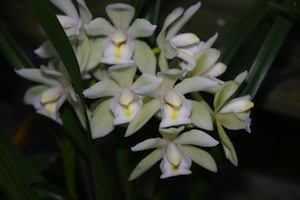- MENU
- HOME
- SEARCH
- WORLD
- MAIN
- AFRICA
- ASIA
- BALKANS
- EUROPE
- LATIN AMERICA
- MIDDLE EAST
- United Kingdom
- United States
- Argentina
- Australia
- Austria
- Benelux
- Brazil
- Canada
- China
- France
- Germany
- Greece
- Hungary
- India
- Indonesia
- Ireland
- Israel
- Italy
- Japan
- Korea
- Mexico
- New Zealand
- Pakistan
- Philippines
- Poland
- Russia
- South Africa
- Spain
- Taiwan
- Turkey
- USA
- BUSINESS
- WEALTH
- STOCKS
- TECH
- HEALTH
- LIFESTYLE
- ENTERTAINMENT
- SPORTS
- RSS
- iHaveNet.com: Home & Garden
By Sean Conway

Receiving a beautiful blooming plant as a holiday gift makes almost anyone happy, but deciding what to do with it after the holidays are over can leave some people perplexed.
The gift plants most of us associate with Christmas are poinsettias, but more and more we are giving and receiving orchids, as they become more readily available year-round at florists and garden centers.
Orchids' exotic and beautiful colors are not limited to the holiday season, as the poinsettia's are, and if you are lucky enough to receive one as a gift, you will want to keep it alive for as long as possible.
Orchids are thought of as elegant and sophisticated yet difficult to grow. The truth is they are quite easy to grow, provided you meet a few key requirements. When happy, orchids will often bloom for months at a time.
The first thing to know when caring for an orchid is what kind it is. In the wild, different orchids grow in a wide range of climates. Some come from equatorial jungles and prefer constant warm temperatures, while others are native to the mountains and prefer cool temperatures.
Two of the most popular orchids given as gifts during the holidays are the moth orchid, or phalaenopsis, and the cymbidium orchid. They are very different in appearance and care.
The phalaenopsis has dark green, paddle-like leaves that seem to grow out of each other and usually lay close to or just above the pot. Their flowers vary from light to dark pink, white, yellow and shades in between. There are often silvery white roots that extend from the plant just above or below where the leaves attach. These specially adapted roots act like sponges and soak up water.
Native to warm climates, moth orchids prefer the same temperatures that most of us find comfortable, between 60 and 65 degrees at night and 72 and 75 during the day.
Overwatering is where most people go wrong with orchids; once a week usually suffices. Moth orchids are grown in bark chips rather than soil. Their roots like to be evenly moist but not wet, and they must have a lot of air space around them to keep them from rotting.
The best way to water your orchid is to put it in the sink and water it thoroughly until water runs out the bottom of the pot and all roots are wet, including the roots that are exposed.
Keep your phalaenopsis out of direct sunlight to avoid burning the leaves. Bright light is preferred, since moth orchids evolved in low light, understory conditions. Feed your orchid with water-soluble orchid food about once per month. I find diluting the dose to one-half strength prevents over fertilizing.
Cymbidium orchids, on the other hand, are native to high elevations in tropical and subtropical regions, and they prefer cooler temperatures and bright light. These orchids send up spikes containing many flowers, which range in color from white to green to shades of pink and mauve.
Cymbidiums are happy with temperatures that range between 50 and 75 degrees, and will tolerate warm daytime temperatures provided they have a 10- to 15-degree drop at night. This scenario is perfect for energy-conscious homeowners who turn down their thermostats at night.
Like phalaenopsis, cymbidiums should not be kept too wet -- but not bone-dry either. Water once a week. They also prefer a well-drained orchid potting mix and regular monthly fertilizing.
Cymbidiums benefit from being outside in a shady location for the summer. I leave mine outside from about the middle of May until the middle of October, when the nighttime temperatures are dipping into the 40s.
Following these simple guidelines will help you keep your orchid happy for years to come.
Cymbidium orchids, pictured here, thrive inside in a wide temperature range but prefer nighttime temperatures 10 to 15 degrees cooler than during the day.
© SEAN CONWAY. DISTRIBUTED BY Tribune Media Services
AUTOS | HOBBIES | EDUCATION | FAMILY | FASHION | FOOD & RECIPES | HOME DECOR | RELATIONSHIPS | PARENTING | PETS | TRAVEL | WOMEN
Home & Gardening - How to Keep Your Orchids Happy and Healthy